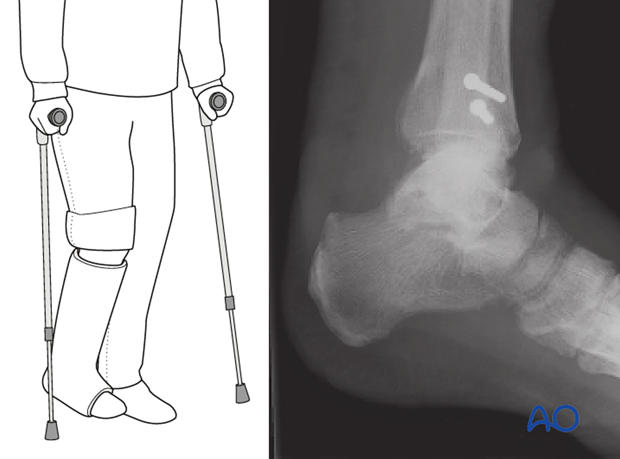Reinsertion of an extruded talus
1. Diagnosis
These devastating injuries present as open ankle wounds. The talus is partially or completely dislocated and found partially or completely extruded, and outside the body.
Open wounds can be extensive and are usually in the anterolateral region of the ankle.
This case demonstrates the presenting soft-tissue injury …
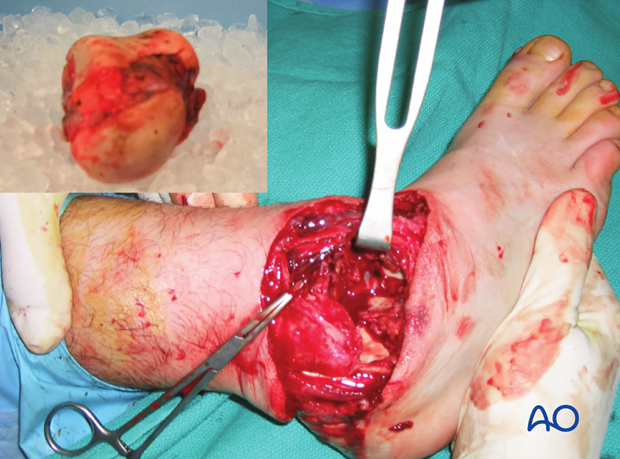
…. and radiology.
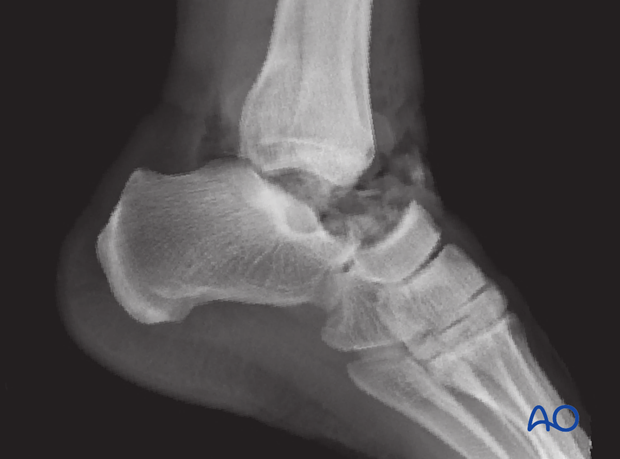
2. Principles
Basic open wound principles are followed with urgent tetanus prophylaxis, antibiotics and urgent debridement. The talus presents partially extruded or completely extruded and should be kept clean and moist.
This is one of the few instances in trauma surgery where an extruded piece of bone should probably be cleaned and reimplanted. There is no replacement for an extruded talus.
The literature is unclear about protocols for treatment of such a dramatic injury. However, there are reported cases where reimplantation after cleansing has been successful.
Keeping the talus clean and moist, and repetitive saline washes of the extruded talus with scrubbing of any debris provides the best chance for success.
This step demonstrates successive cleansing of an extruded talus with the clean wash on the right and the initial wash on the left.
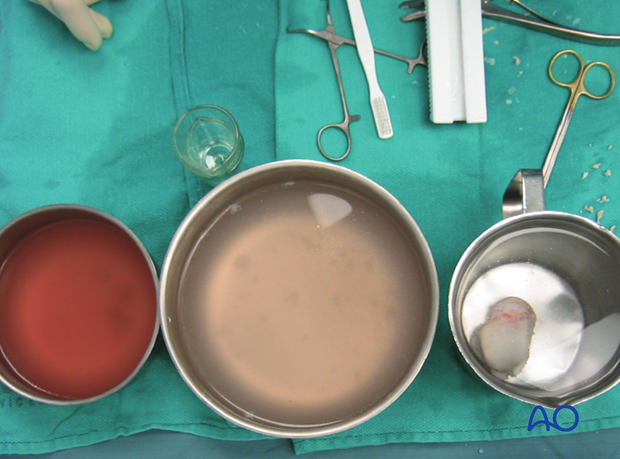
3. Reinsertion
The cleansed recipient site and the cleansed extruded talus are reunited. Careful reinsertion is performed as the talus is extremely slippery.
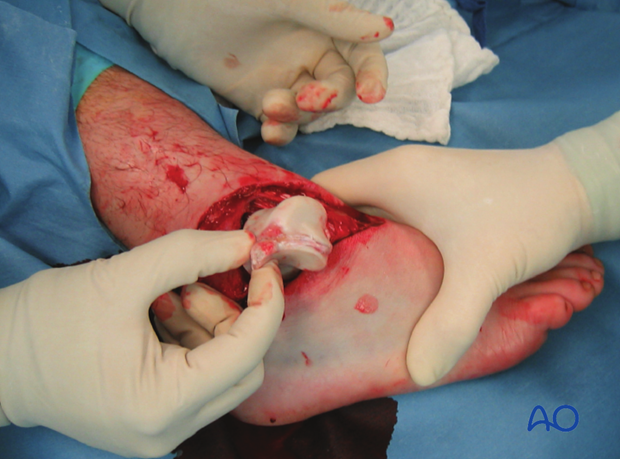
Accompanying injuries
Occasionally, this dramatic event is accompanied by other soft-tissue and tendon injuries,...
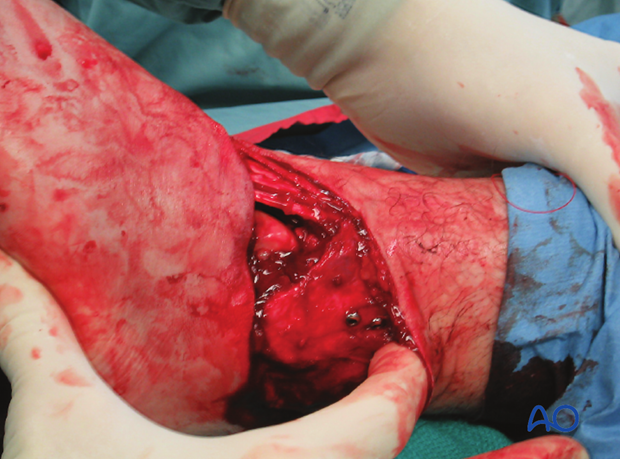
...or fractures such as the lateral malleolus, which need to be fixed.
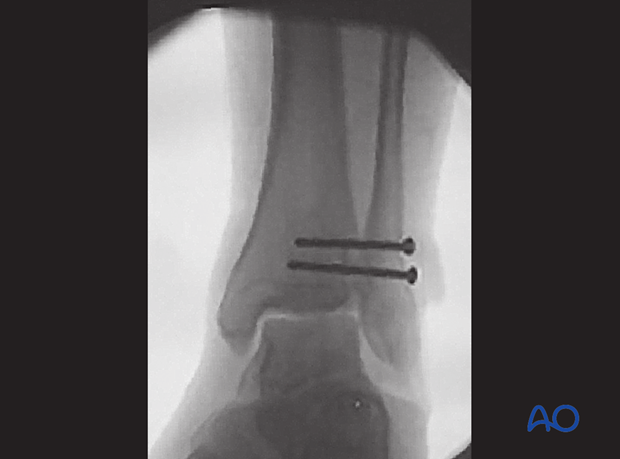
4. Aftertreatment
Antibiotic prophylaxis and immobilization with careful follow-up are mandatory. Infection rates have been reported unfortunately to be between 25% and 50%.
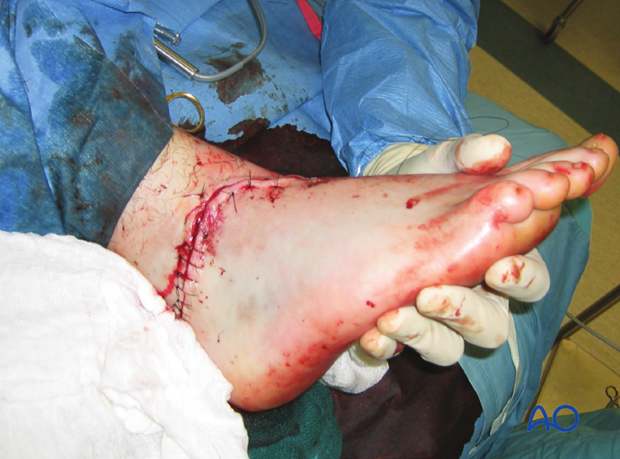
Range of motion is not advised and immobilization is continued for 3 months. Then weight bearing would be progressed as patient symptoms allow.
Long-term prognosis is guarded.
